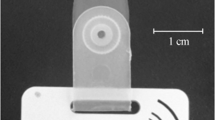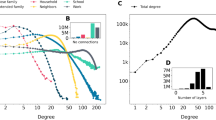Abstract
Most individuals have few close friends, leading to potential isolation after a friend’s death. Do social networks heal to fill the space left by the loss? We conduct such a study of self-healing and resilience in social networks. We compared de-identified, aggregate counts of monthly interactions in approximately 15,000 Facebook networks in which someone had died with similar friendship networks of living Facebook users. As expected, a substantial amount of social interaction was lost with the death of a friend. However, friends of the decedent immediately increased interactions with each other and maintained these added interactions for years after the loss. Through this, the social networks recovered approximately the same number of active connections that had been lost. Interactions between close friends of the decedent peaked immediately after the death and then reached stable levels after a year. Interactions between close friends of the decedent and acquaintances of the decedent stabilized sooner, within a few months. Networks of young adults, ages 18 to 24, were more likely to recover than all other age groups, but unexpected deaths resulted in larger increases in social interactions that did not differ by friends’ ages. Suicides were associated with reduced social-network recovery.
This is a preview of subscription content, access via your institution
Access options
Access Nature and 54 other Nature Portfolio journals
Get Nature+, our best-value online-access subscription
$29.99 / 30 days
cancel any time
Subscribe to this journal
Receive 12 digital issues and online access to articles
$119.00 per year
only $9.92 per issue
Buy this article
- Purchase on Springer Link
- Instant access to full article PDF
Prices may be subject to local taxes which are calculated during checkout



Similar content being viewed by others
References
Marsden, P. Core discussion networks of Americans. Am. Sociol. Rev. 52, 122–131 (1987).
McPherson, M., Smith-Lovin, L. & Brashears, M. Social isolation in America: changes in core discussion networks over two decades. Am. Sociol. Rev. 71, 353–375 (2006).
Dunbar, R. I. M., Arnaboldi, V., Conti, M. & Passarella, A. The structure of online social networks mirrors those in the offline world. Soc. Networks 43, 39–47 (2015).
Cohen, S. & Wills, T. A. Stress, social support, and the buffering hypothesis. Psychol. Bull. 98, 310–357 (1985).
Cohen, R., Erez, K., ben Avraham, D. & Havlin, S. Resilience of the Internet to random breakdowns. Phys. Rev. Lett. 85, 4626–4628 (2000).
Callaway, D. S., Newman, M., Strogatz, S. H. & Watts, D. J. Network robustness and fragility: percolation on random graphs. Phys. Rev. Lett. 85, 5468–5471 (2000).
Norris, F. H. & Kaniasty, K. Received and perceived social support in times of stress: a test of the social support deterioration deterrence model. J. Pers. Soc. Psychol. 71, 498–511 (1996).
Bagrow, J. P., Wang, D. & Barabási, A.-L. Collective response of human populations to large-scale emergencies. PLoS ONE 6, e17680 (2011).
Gao, L. et al. Quantifying information flow during emergencies. Sci. Rep. 4, 1–6 (2014).
Phan, T. Q. & Airoldi, E. M. A natural experiment of social network formation and dynamics. Proc. Natl Acad. Sci. USA 112, 6595–6600 (2015).
Hobfoll, S. E. et al. Five essential elements of immediate and mid-term mass trauma intervention: empirical evidence. Psychiatry 70, 283–315 (2007).
Burton, A. M., Haley, W. E. & Small, B. J. Bereavement after caregiving or unexpected death: effects on elderly spouses. Aging Ment. Health 10, 319–326 (2006).
Seltzer, M. M. & Li, L. W. The dynamics of caregiving: transitions during a three-year prospective study. Gerontologist 40, 165–178 (2000).
Utz, R., Carr, D., Nesse, R. & Wortman, C. The effect of widowhood on older adults’ social participation: an evaluation of activity, disengagement, and continuity theories. Gerontologist 42, 522–533 (2002).
Breen, L. J. & O’Connor, M. Family and social networks after bereavement: experiences of support, change and isolation. J. Fam. Ther. 33, 98–120 (2010).
Stroebe, W., Zech, E., Stroebe, M. S. & Abakoumkin, G. Does social support help in bereavement? J. Soc. Clin. Psychol. 24, 1030–1050 (2005).
Bonanno, G. A. Loss, trauma, and human resilience: have we underestimated the human capacity to thrive after extremely aversive events? Am. Psychol. 59, 20–28 (2004).
Stroebe, M., Schut, H. & Stroebe, W. Health outcomes of bereavement. Lancet 370, 1960–1973 (2007).
Azoulay, P., Zivin, J. S. G. & Wang, J. Superstar extinction. Q. J. Econ. 125, 549–589 (2010).
Hampton, K., Goulet, L. S., Rainie, L. & Purcell, K. Social Networking Sites and Our Lives (Pew Internet and American Life Project Technical Report, Pew Research Center, 2011).
Rainie, H. & Wellman, B. Networked: The New Social Operating System (MIT Press, 2012).
Jones, J. J. et al. Inferring tie strength from online directed behavior. PLoS ONE 8, e52168 (2013).
Burke, M. K., Marlow, C. & Lento, T. Social network activity and social well-being. In Proc. 28th International Conference on Human Factors in Computing Systems, 1909–1912 (ACM, 2010).
Hobbs, W. R., Burke, M. K., Christakis, N. A. & Fowler, J. H. Online social integration is associated with reduced mortality risk. Proc. Natl Acad. Sci. USA 113, 12980–12984 (2016).
Thoits, P. A. Conceptual, methodological, and theoretical problems in studying social support as a buffer against life stress. J. Health Soc. Behav. 23, 145–159 (1982).
Mokdad, A. H., Marks, J. S., Stroup, D. F. & Gerberding, J. L. Actual causes of death in the United States, 2000. J. Am. Med. Assoc. 291, 1238–1245 (2004).
Houck, J. A. A comparison of grief reactions in cancer, HIV/AIDS, and suicide bereavement. J. HIV/AIDS Soc. Serv. 6, 97–112 (2007).
Stroebe, W., Stroebe, M., Abakoumkin, G. & Schut, H. The role of loneliness and social support in adjustment to loss: a test of attachment versus stress theory. J. Pers. Soc. Psychol. 70, 1241–1249 (1996).
Subramanian, S. V., Elwert, F. & Christakis, N. A. Widowhood and mortality among the elderly: the modifying role of neighborhood concentration of widowed individuals. Soc. Sci. Med. 66, 873–884 (2008).
Bisconti, T. L. & Bergeman, C. S. Emotional well-being in recently bereaved widows: a dynamical systems approach. J. Gerontol. B 59, P158–P167 (2004).
Burke, M. K. & Kraut, R. E. The relationship between Facebook use and well-being depends on communication type and tie strength. J. Comput. Mediat. Commun. 21, 265–281 (2016).
Williams, A. L. & Merten, M. J. Adolescents’ online social networking following the death of a peer. J. Adolescent Res. 24, 67–90 (2009).
Brubaker, J. R., Hayes, G. R. & Dourish, P. Beyond the grave: Facebook as a site for the expansion of death and mourning. Inform. Soc. 29, 152–163 (2013).
Rossetto, K. R., Lannutti, P. J. & Strauman, E. C. Death on Facebook: examining the roles of social media communication for the bereaved. J. Soc. Pers. Relat. 32, 974–994 (2015).
Horowitz, M. J. et al. Diagnostic criteria for complicated grief disorder. Am. J. Psych. 154, 904–910 (1997).
Miritello, G., Lara, R., Cebrian, M. & Moro, E. Limited communication capacity unveils strategies for human interaction. Sci. Rep. 3, 1950 (2013).
Kübler-Ross, E. On Death and Dying (Macmillan, 1969).
Bliss, T. V. & Collingridge, G. L. A synaptic model of memory: long-term potentiation in the hippocampus. Nature 361, 31–39 (1993).
Conwell, Y., Duberstein, P. R. & Caine, E. D. Risk factors for suicide in later life. Biol. Psych. 52, 193–204 (2002).
Rossow, I. & Lauritzen, G. Balancing on the edge of death: suicide attempts and life-threatening overdoses among drug addicts. Addiction 94, 209–219 (1999).
Hawton, K., Houston, K. & Haw, C. Comorbidity of axis I and axis II disorders in patients who attempted suicide. Am. J. Psych. 160, 1494–1500 (2014).
Acknowledgements
We thank J. Fowler, N. Christakis, C. Marlow, L. Adamic, D. Ferrante, A. Bejar, P. Fleming, W. Nevius and M. Jackman for their support on this project.
Author information
Authors and Affiliations
Contributions
W.R.H. and M.K.B. designed the research; W.R.H. analysed the data; W.R.H. and M.K.B. wrote the paper.
Corresponding author
Ethics declarations
Competing interests
W.H. was a Facebook research intern in 2013. M.B. is a Facebook employee. W.H. prepared the research protocol prior to his internship; Facebook then provided data access to W.H. to conduct the study as an intern. Facebook did not place any restrictions on the design, data collection and analysis, decision to publish or preparation of the manuscript, beyond the requirement that this work was to be done in compliance with its data policy and that the prepared manuscript was subject to internal research review to not release proprietary information. During the study protocol’s review by the California Department of Public Health, Facebook submitted a letter stating that it would not attempt to influence the scientific interpretation of the results and would not prohibit the publication of the results owing to their scientific content.
Supplementary information
Supplementary Information
Supplementary Notes, Supplementary Methods, Supplementary Figures 1–8, Supplementary Tables 1–12, Supplementary References. (PDF 430 kb)
Rights and permissions
About this article
Cite this article
Hobbs, W., Burke, M. Connective recovery in social networks after the death of a friend. Nat Hum Behav 1, 0092 (2017). https://doi.org/10.1038/s41562-017-0092
Received:
Accepted:
Published:
DOI: https://doi.org/10.1038/s41562-017-0092
This article is cited by
-
Create an IPCC-like body to harness benefits and combat harms of digital tech
Nature (2023)
-
Social responses to the natural loss of individuals in Barbary macaques
Mammalian Biology (2022)
-
Complex networks: Network healing after loss
Nature Human Behaviour (2017)



